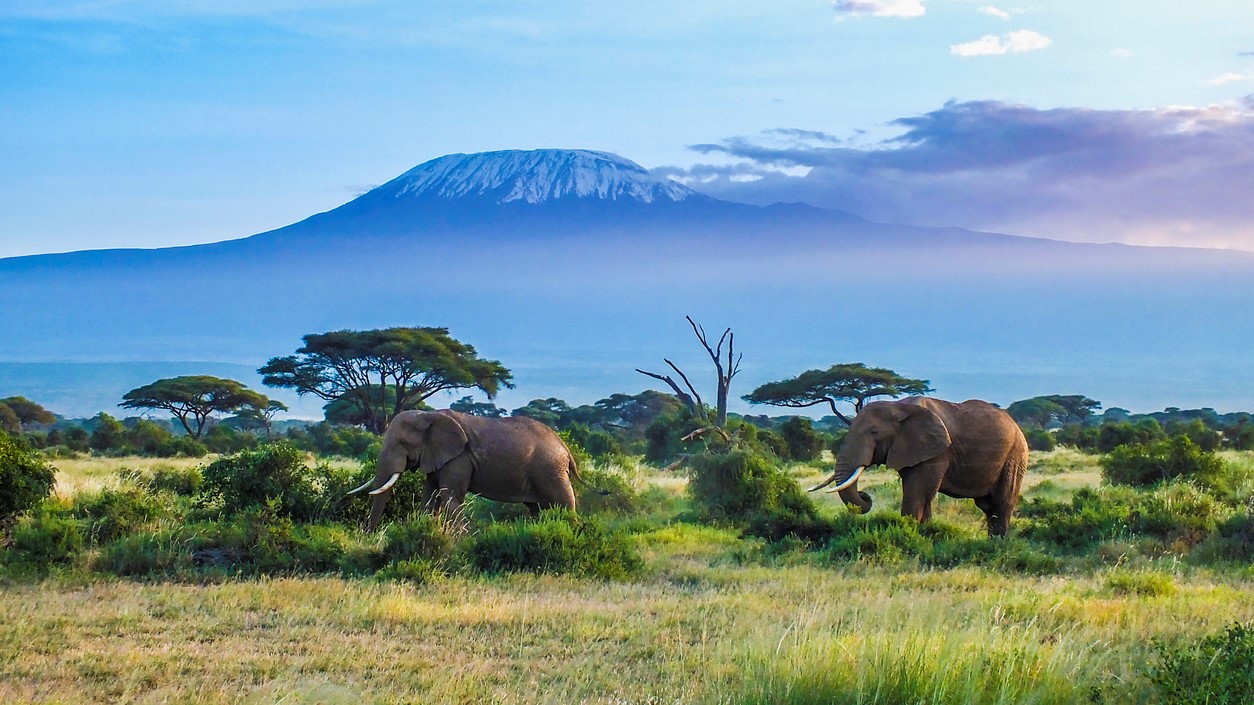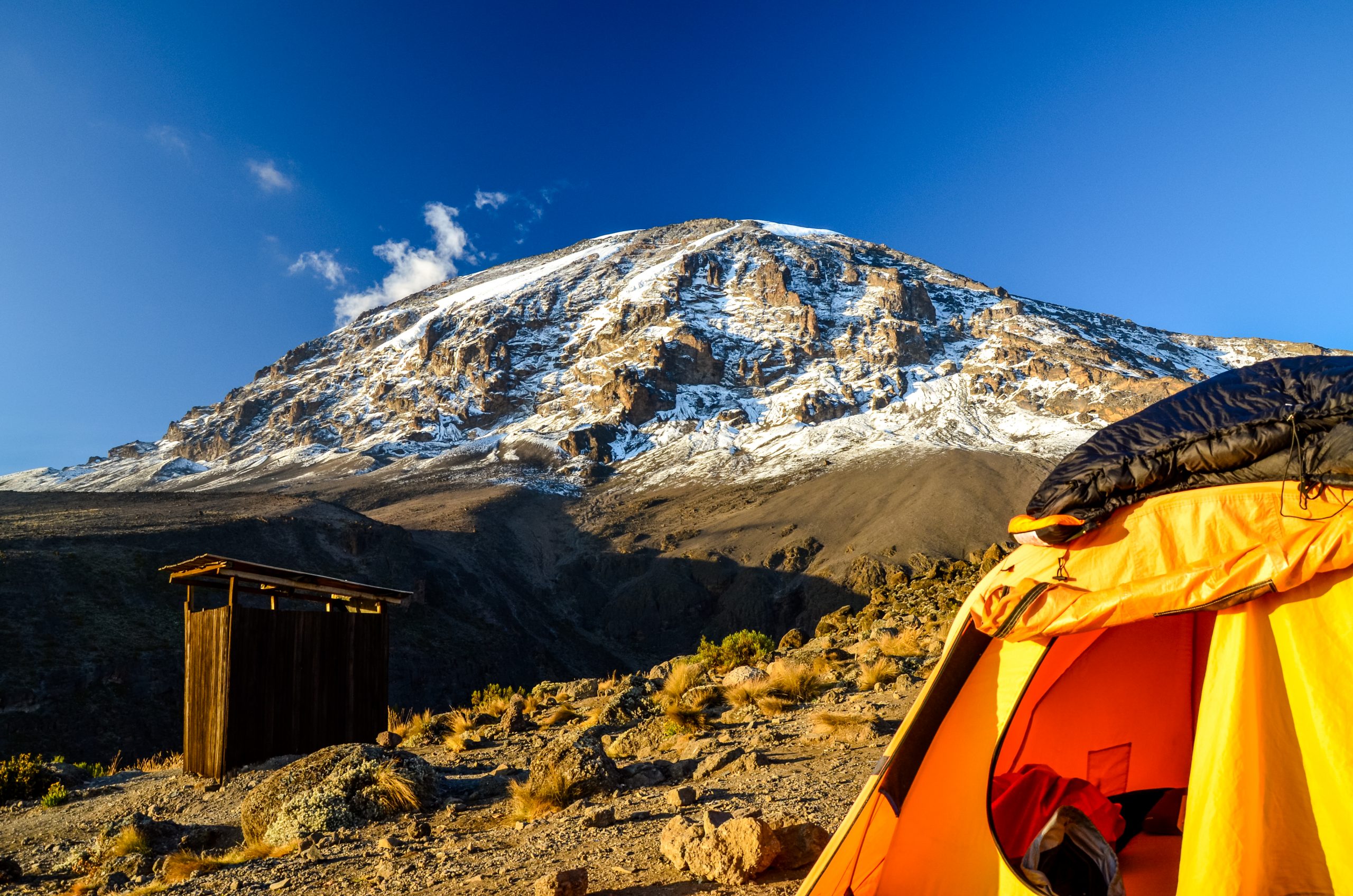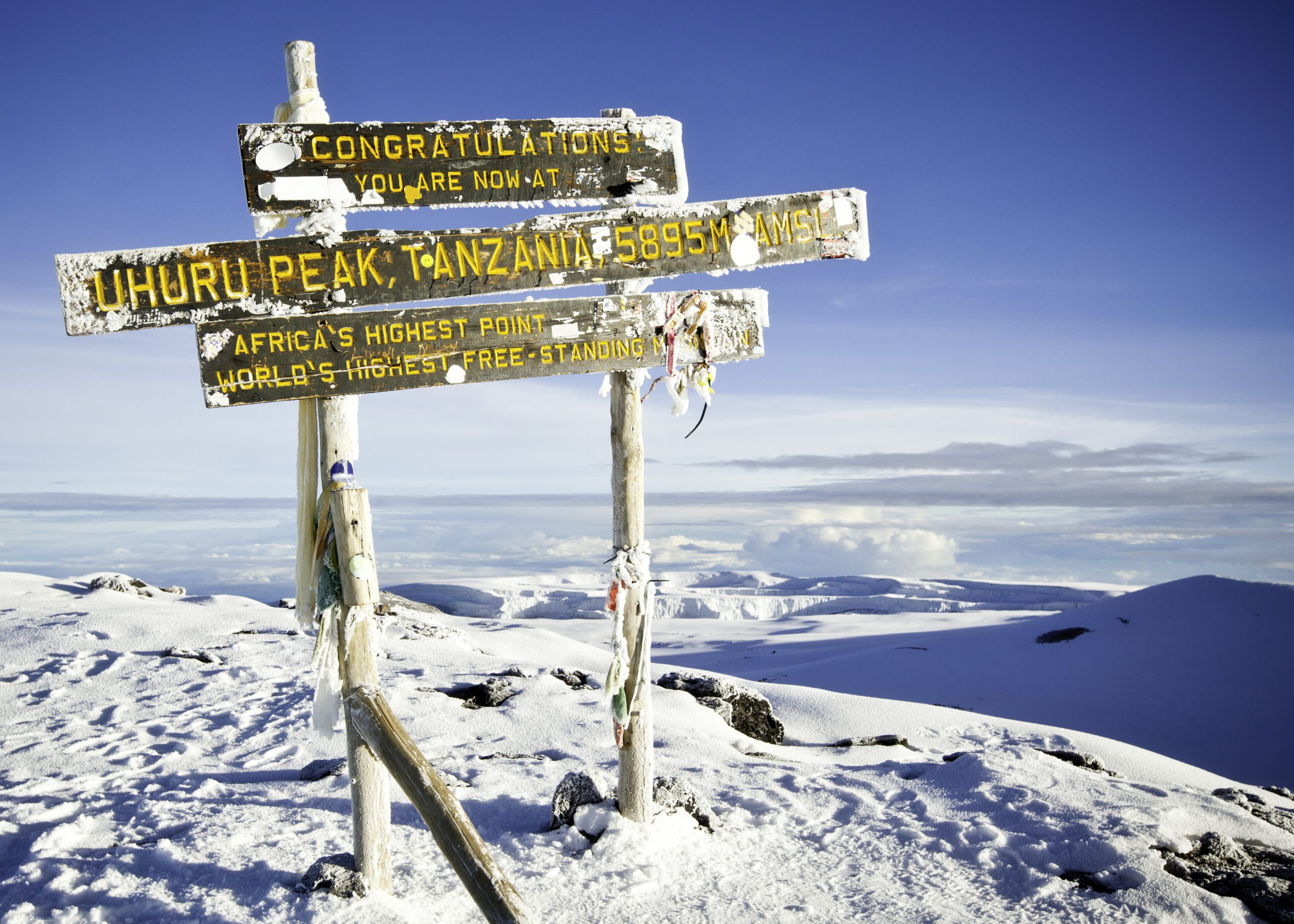Conquering Mount Kilimanjaro, the tallest mountain in Africa at 19,340 feet, is not an easy feat. The Kilimanjaro mountain lies across the borders of Kenya and Tanzania, known to be a surefire test of endurance, apparently pushing your pain threshold further than you can imagine, thanks to the altitude and the weather conditions.
But, with proper training, optimal use of strength, and will power, you can conquer the peak. It’s important that you don’t hike alone, in fact, you’re not allowed to hike Mount Kilimanjaro alone. You will need to be accompanied by support staff like porters, cooks, and guides. Kilimanjaro expeditions are offered by different companies and the above-mentioned staff are provided by them.
Also read: 10 of the best things to do in Tanzania
8 Things To Remember Before You Hike Mount Kilimanjaro
1. Beware Of The Cold

Africa is warm, but Mount Kilimanjaro is not. Even though the mountain is located close to the equator, the temperature drops with the elevation. As long as the sun is out during the day, it is warm, but the nights can get rough with the temperatures dropping sharply. There might be no ice before you go to sleep, but your surroundings might be covered in it when you wake up. So your wardrobe should be in tune with the fluctuating temperatures. Also, use hand warmers to keep yourself warm.
Also read: 12 best high altitude destinations to visit
2. Prepare Your Lungs For Mount Kilimanjaro

Mount Kilimanjaro witnesses people from different walks of life completing the hike. Both young and old people can achieve this keeping in mind the individual limits of the body. You don’t need to be a regular marathon runner, but you do need to keep in mind your stamina and the hike. The altitude can affect the extremely fit and mildly fit alike. Everyday things like eating and drinking water can actually get tiresome.
3. You Don’t Climb Kilimanjaro, You Hike It

Unlike usual mountain treks, ropes, harnesses, ice axes, or mountaineering equipment are not required. In spite of being the tallest mountain in Africa, it is a walk up the Kilimanjaro mountain and there is no danger of falling off it. Completing the ascent to Kilimanjaro is easy and any ordinary person can attempt it. Therefore, it is also called ‘Everyman’s Everest’. The mountain gives a chance to everyone. Sometimes people who are very fit become more competitive and start to find the pace of the hike slow. This results in being demotivated. A lot of older people complete the Kilimanjaro hike. The staff often encourage the hikers to slow down their pace as it is their best bet at beating altitude sickness and minimising the risk of not completing the climb.
4. The Biggest Villain Of All: Altitude Sickness

Adapting to the new temperature and altitude as the elevation increases seems very logical, but implementing it is not as easy. It is believed that people who are fit usually get altitude sickness because they know their bodies can move at a faster pace than what the hike requires. They know the capabilities of their body, but since the hike is very slow, they cannot adapt to it.
The most common illness on Mount Kilimanjaro is acute mountain sickness. This happens when the human body tries to adapt to low oxygen levels at higher altitudes. Feelings of nausea, tiredness, and headaches are the usual symptoms. Other mental abilities like focusing on something and making sound decisions are also impaired. Rest thoroughly at each break, hydrate, and talk to your guides. Keep and maintain a fixed system or routine and swear by it. As the body learns to adjust to the lack of enough oxygen, these symptoms disappear. Be patient with yourself and listen to the guide to come out of it.
5. A Weeklong Stay At Mount Kilimanjaro

As mentioned earlier, Kilimanjaro takes its own sweet time to test the mettle of its hikers. You might be at the peak of your fitness and youth, but it is recommended you take seven to nine days to complete the summit. The slower you hike, the more time your body gets to acclimatise, and the hike gets easier to complete. But don’t drag along, because the body might lose the ability to adjust as well. There are seven routes to reach Uhuru Point, the summit. The shortest routes involve hiking the Kilimanjaro mountain (6,000 feet to 19,340 feet), in three days. As tiresome as it sounds, it also might decrease your chances to finish the hike. Spend your time and money wisely and enjoy the entire hike.
6. Sleepless And Hunger-less Days
As the altitude increases, your appetite dives. As you hike, your body will feel satiated and will not crave more food. On the contrary, this is when you need more food because you burn more calories at higher altitudes. Additionally, the energy spent on Mount Kilimanjaro and the increase in your breathing rate require you to eat more calories than the usual amount. Also, air pressure might make you feel bloated and make gas expand in your body resulting in a lot of farting! Choose a company that provides you with meals of fresh vegetables, fruits, meat, and warm beverages. Fight nausea and keep yourself nourished throughout the hike.
Despite the physical strain, your body cannot sleep well in higher altitudes. Since oxygen levels are lower, and the air gets thinner as you climb, your breathing gets shallower and more laboured. This might even cause weird dreams. You will only get light sleep.
7. Toilet Training At Kilimanjaro Mountain

Depending on the company you choose and the services they provide, you get to use different types of toilets. Some companies offer long toilets that are holes dug in the ground with a wooden shelter. It is okay if you can handle this, but they are best to be avoided because they tend to be unsanitary and unhygienic. Other companies provide toilet tents that have plastic commodes with a toilet seat and a flushing system. If you need to relieve yourself on the trail you can always go behind a rock. But it is strongly recommended to bring your stock of toilet paper.
8. The Toughest Night: Summit Night

While the start of the trek and adjusting to Mount Kilimanjaro might be difficult, the summit night takes it up a notch, because the hike starts at midnight. You are already sleep-deprived in the mountains, so hiking gets more difficult as it gets dark. Headlamps illuminate only a short distance ahead of you, but you have to follow the guide. Also, nights on Mount Kilimanjaro are more testing than days. The temperature drops as you enter the arctic zone, and hikers usually wear multiple layers of clothing to reach the summit which takes around six to seven hours. Hydrate, do not forget to breathe, and take it slow. Do not look up too much as it will put more strain on your already tired body. Despite the tiresome hike, the mountain and the sunrise you witness are worth it.
Be Responsible And Thankful
After achieving this strenuous hike, give yourself some appreciation, and allow yourself to be happy. Hiking Mount Kilimanjaro is not an easy task. After you have achieved it you might feel different and gain a new perspective from this experience. But do not forget to be thankful for the guides, cooks, and porters who have helped you through this journey. Show gratitude towards nature and the mountain that let you experience this beautiful adventure. Don’t litter and help the ecosystem. The experience is worth your time and energy only if done right.


